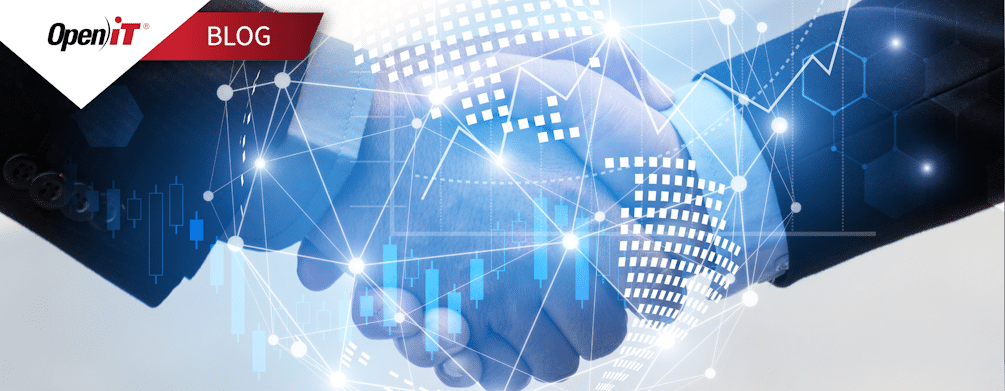If you have recently experienced renegotiating your contract with one of your major software suppliers, you are probably feeling a bit battered and bruised. While vendor negotiations appear amicable to the casual viewer, it is more like a cold war — with you wanting to ensure optimal use of the software at a minimal cost, while your supplier aiming to increase revenue.
For any company, software contract renewals are a frequent and necessary pain point. If you are in the scientific or engineering business, the pain is multiplied because you are reliant on so many specialized and costly software products, such as CAD, BIM, FEA, and GIS tools.
Most of this software comes with built-in analytics that measures usage from the vendor’s perspective. However, relying on a vendor’s analysis of how you used their products over the last 12 months is like letting the wolf watch the sheep. Aside from having zero bargaining power, there is also no way you can rely on spreadsheets to extract usage data.
Not to mention, you would need a whole team of resources to do this.
SLM: Key to Succesful Software Contract Renewals
A software license management (SLM) is a crucial component to any software contract renewal endeavor. Because SLM solutions provide a comprehensive view of your company’s license usage, SLM adoption has steadily increased. Not only that, SLMs can help you implement a robust and efficient policy that cover all the bases on software access and entitlement, which is crucial to securing software contracts with the most optimal license agreements.
Here are a few golden rules for running a tight software license management approach:
- Document all software that are being used in the company and manage them in a centralized location. It is surprising how often business units acquire software without going through Information Technology Services (ITS) for proper evaluation and procurement. Ensure that there is a policy that outlaws this.
- Eliminate any “shelf” software, i.e., software licenses that were purchased but are not used. You do not want to renew such licenses. This often happens in engineering and construction companies when a large project is undertaken, as the software required for the project is built into the total cost. When the project ends, the software licenses usually remain, although they are no longer used. Make sure that when the project is closed, ITS is kept in the loop so that the licenses can either be discontinued or absorbed into the existing license pool.
- Implement a chargeback system, where business units are responsible for their software usage and the costs attached. This is one of the best ways to ensure that costs are contained because the business unit managers now have these costs adding to their monthly operating expenses, and they will swiftly act to reduce them.
You may already be at this level of SAM maturity, but there are still a few more tricks to have up your sleeve.
- Know Your User (KYU) and educate them. If you have not yet implemented chargebacks, do it kindly, explaining to the managers and their staff how to get the best use out of their software at the least cost.
- Reinforce this with license harvesting, again, introducing the practice with education and documented policy that stipulates how many minutes a license is idle before it is harvested and released back into the license pool.
User Needs: Foundation to Software Contracts
Your software license management solution is essential for striking a balance between the number of users and the number of licenses, as you will see in the report illustrated below, which analyses the minimum number of licenses you need for peak usage.

Anticipating your software requirements for the upcoming year or beyond is a challenging endeavor. Factors such as impending projects, potential mergers or acquisitions, and forecasted growth further complicate this task.
The cornerstone of a successful software contract renewal lies in truly understanding the unique needs of your users. On one hand, you have power users, who depend on certain tools for the majority of their daily tasks. On the other, there are occasional users who only require specific applications intermittently.
Gaining insights into the usage patterns and durations is invaluable. Not only does it empower you during negotiations with software vendors, but it also positions you to sculpt a software license agreement that’s tailored to your organization’s exact needs.
Named User Licenses: Prime Option for Power Users
For power users who frequently utilize specific software in their daily roles, the named user license emerges as a fitting choice. Simply put, a named user license is designated to a particular individual, not a device. This ensures these super users always have seamless access to their essential tools, irrespective of their location – be it the office, home, or on-the-go.
Incorporating named user licenses during your software contract renewal demands foresight. Engage with software vendors to embed provisions in the license agreement that address changes in user status. Such provisions can facilitate easy termination or transition of the license when the assigned user departs the company or undergoes a role shift.
Give Your Basic Users a Boost
When looking to renew your software contracts, consider offering basic users a well-rounded package. For example, your administrative staff might not require Access within their Microsoft Office suite; the Basic bundle might suffice. However, incorporating a select few advanced tools can significantly enhance their capabilities.
Opting for the Premium package, which costs four times more than the Basic, might be overkill for them. However, sprinkling in certain advanced features to their basic package can elevate their workflow and enhance productivity.
Explore Other Software Licensing Options
Another license type you can consider is a license that is linked to a particular machine. This license would suit an environment where a user occasionally uses special features, which they can access via this common-use desktop or laptop.
This by no means exhausts the combinations of license types that may be available to you, and what would be the best fit depends a great deal on your business model and architecture.
If you are a multi-national corporation, a global license is costly but may work out better than having several contracts with vendor partners across regions such as EMEA and ASEAN countries.
We have not even touched on SaaS, as that is a story on its own, although we realize that you may well have a mix of on-site and cloud licenses.
Renew Software Contracts with Open iT
What we at Open iT have found is that many of our customers consult with us when it comes to software contract renewals, even if they have a mature ITAM and SAM environment.
The reason for this is that we have a major advantage in that we have oversight and historical knowledge of vendor products and licensing arrangements across a wide range of industries, ranging from energy and electronics, to automotive and aerospace & defense, based on previous experiences with our existing client base.
Do you need comprehensive insights to prepare for your next vendor negotiations? We welcome inquiries about our products & solutions – contact us today!






